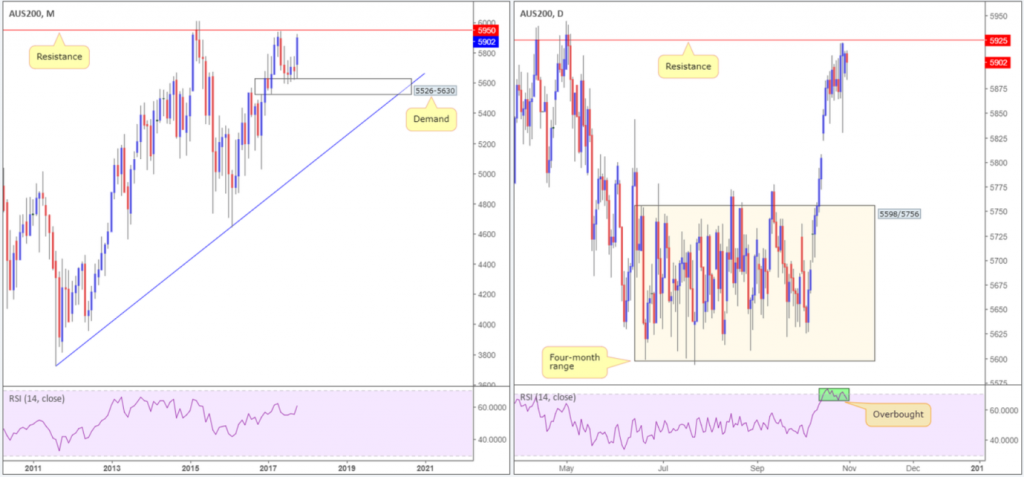Updated September 2020
Many envision a sense of freedom when introduced to trading – freedom to spend more time with family, freedom to travel, freedom to lead life on their terms.
Regrettably, this freedom fails to materialise for the majority of traders.
Traders, particularly newer traders, want freedom and success now. They fail to understand that trading is like any other profession – it takes time to learn. With that, most believe the faster (lower) timeframes offer a quicker road to success, overlooking the importance (and benefit) of higher timeframe trading. This results in many traders obsessing over minor pip movements, scrutinising short-term chart structure and patterns, often with little financial return.
Less Stress
Traders that engage with lower timeframes, day traders and scalpers, often complain about the need to make money in the short term, akin to a weekly or monthly pay check.
While some traders are able to pull this off on a consistent basis, many find this a stressful endeavour and ultimately end up throwing in the towel. Trading the higher timeframes is considered less taxing. Unfortunately, many do not consider it a viable option when absorbed by short-term action.
An hour in the morning and perhaps an hour in the evening to check any trades, or alter any levels, is usually sufficient on the higher timeframes. Working with the higher timeframes, however, requires a different mind-set to intraday trading. Traders using the higher timeframes adopt a long-term view, similar to an investor. Intraday traders, on the other hand, are typically in and out of the market during a day’s session, requiring more of a speculative mind-set.
Some can handle the stresses that come with trading lower timeframes. These are usually experienced traders who strictly follow their trading plan. Yet, for most it is a demanding venture, involving hours of screen time.
Patience
Trading the higher timeframes is often a waiting game. It can take days, or even weeks, for a setup to appear. Having the patience to remain on the bench when the market tempts you to engage is vital to a trader’s success. This can be said for either intraday or longer-term settings.
Higher Timeframes Help Determine Lower Timeframe Direction
Figure A shows the AUS200 index CFD chart, covering the monthly and daily timeframes. While the chart does not display lower timeframes, it serves well as an introductory case.
(FIGURE A)
Figure A demonstrates a four-month range on the daily timeframe (which could just as easily be a 5-minute or 15-minute chart – markets are fractal). Before the range break, many would conclude there’s equal opportunity to trade both long and short, fading range extremes.
By reading the higher timeframes, however, the monthly timeframe, in this case, revealed hefty demand. In fact, the four-month daily consolidation formed around the top edge of the demand area. Knowing this, and knowing traders tend to enter long positions at demand, what direction would you think the market is likely to break on the daily timeframe?
Recognising where you’re trading in the bigger picture also helps avoid traps. For example, buying into a higher-timeframe supply (not visible on the lower timeframes) from a lower-timeframe support can force an unnecessary loss.
Some Notable Differences Between Higher and Lower Timeframes
- Traders on the higher timeframes have more time to conduct thorough analysis. Lower timeframe traders, particularly scalpers, sometimes have to make quick decisions. Time is on your side with the higher timeframes.
- Understandably, entry is crucial on the lower timeframes. There is little room for error. On the higher timeframes, entry is flexible as you tend to have more space to work with.
- Risk events. Economic indicators can cause sharp gyrations on the lower timeframes, while higher timeframes suffer much less of an impact.
- Arguably, the most common pitfall in this business is overtrading, especially on the lower timeframes. Trading the higher timeframes helps eliminate this, since less interaction is required.
Is Higher Timeframe Trading for You?
Most traders over complicate their trading.
Different traders have different goals. Some prefer to be more involved with the markets, taking multiple positions each day; others are comfortable with slower timeframes, briefly checking charts once or twice per day. The lower timeframes will offer more setups, yet the trader is required to be more accurate which often involves more screen time, too.
If you work full time, trading the higher timeframes could be a suitable option.
Similarly, if the idea of sitting at a desk, sometimes hours on end, is not to your liking, higher timeframe trading may be the path for you.
However, as briefly underlined above, to trade the higher timeframes effectively you’ll need to accept a mindset equivalent to an investor, rather than a short-term trader.
[wpi_designer_button id=23298]
The accuracy, completeness and timeliness of the information contained on this site cannot be guaranteed. IC Markets does not warranty, guarantee or make any representations, or assume any liability regarding financial results based on the use of the information in the site.
News, views, opinions, recommendations and other information obtained from sources outside of www.icmarkets.com.au, used in this site are believed to be reliable, but we cannot guarantee their accuracy or completeness. All such information is subject to change at any time without notice. IC Markets assumes no responsibility for the content of any linked site.
The fact that such links may exist does not indicate approval or endorsement of any material contained on any linked site. IC Markets is not liable for any harm caused by the transmission, through accessing the services or information on this site, of a computer virus, or other computer code or programming device that might be used to access, delete, damage, disable, disrupt or otherwise impede in any manner, the operation of the site or of any user’s software, hardware, data or property.





